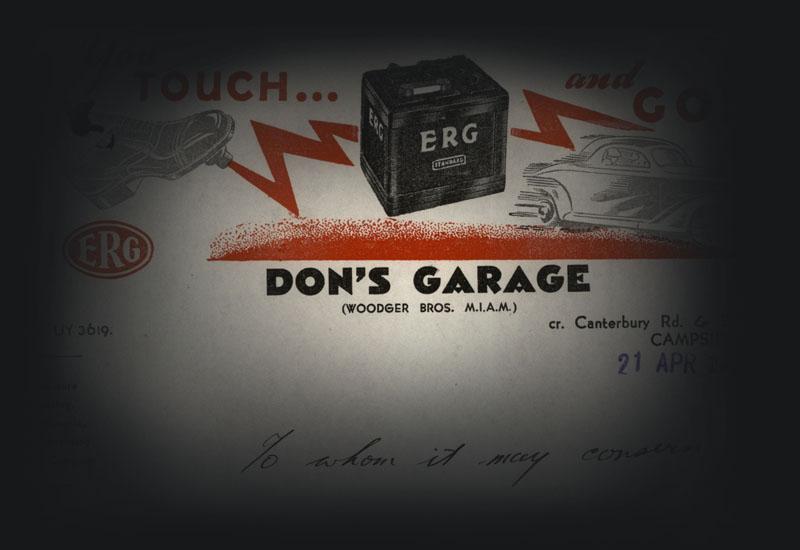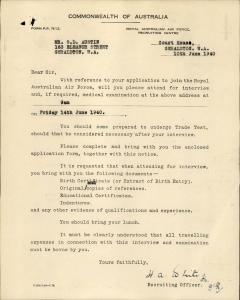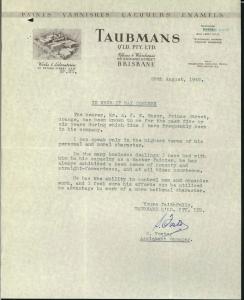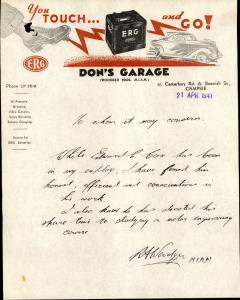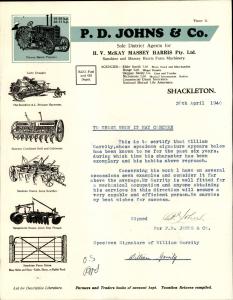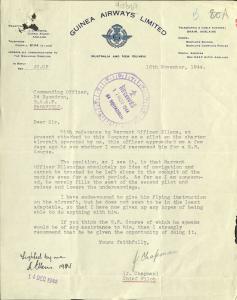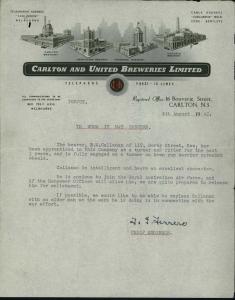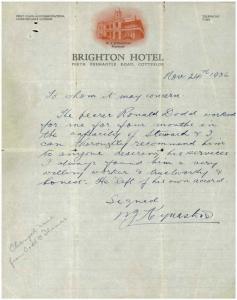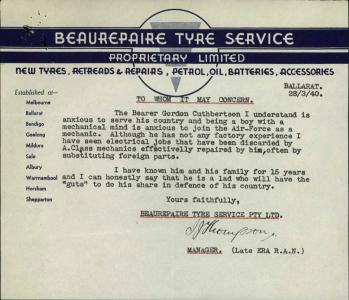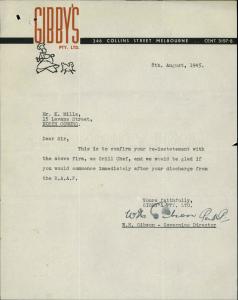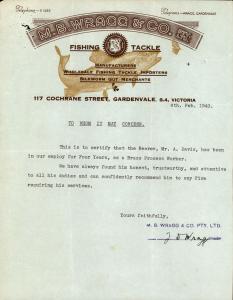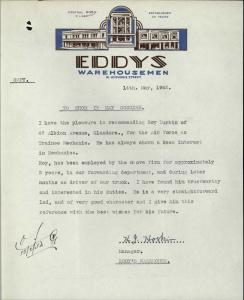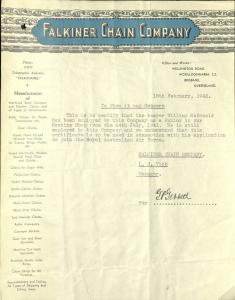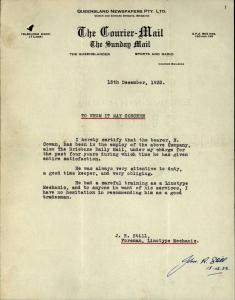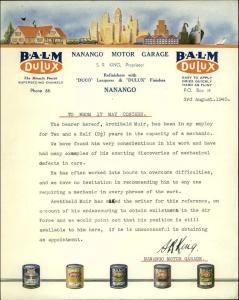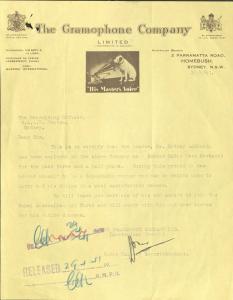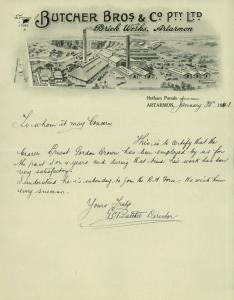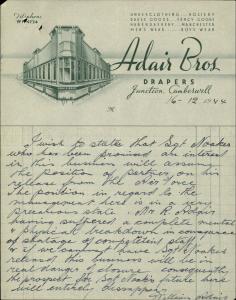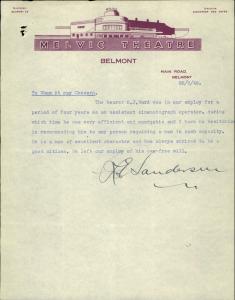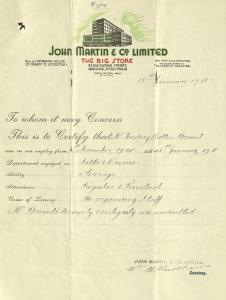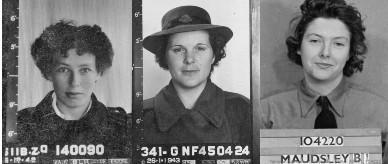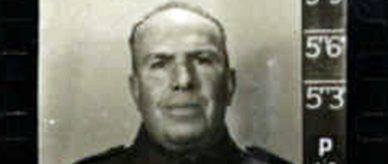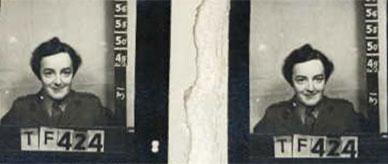On 14 June 1940, 19-year-old Sydney Drury Austin had an appointment at the Court House in Geraldton, Western Australia. The letter inviting Austin to the interview asked him to bring his lunch and several documents, including written references.
The interview went well, and Austin became an aircraft hand in the Royal Australian Air Force (RAAF).
Letters of reference
Many of the 215,000 men and women who served in the RAAF during World War II had a similar experience to Austin. Their service records often include one or more letters of reference – single pages offering a brief glimpse into the enlistee’s pre-war life.
Austin's service record includes a letter from Premiere Woodyard that reports him to be an 'intelligent and trustworthy lad'.
Some letters of reference from employers, family acquaintances or schoolteachers were handwritten on plain lined paper. Others were more formal and typed on business stationery.
With enlistees coming from all walks of life, the types of businesses vary enormously – from household names like Taubmans, Rosella and Hoyts to smaller local companies such as Burfein's Garage of Kellerberrin and Don's Garage of Campsie.
Many references are written on ornate and detailed letterheads. PD Johns and Co's stationery includes illustrations of their farm products: ploughs, gates and harvesters. McDowells, a Sydney department store, included an illustration of their entire multi-storey shopfront. New System Telephones used their letterhead to promote one of their latest products, the ElectrICE refrigerator, complete with frosted tips on the 'ICE'.
Almost all of the letters offer high praise, describing the enlistee as honest, hard-working, and intelligent. But the rare scathing report also appears. In one from Guinea Airways Limited, the enlistee is described as having 'absolutely no idea of navigation and cannot be trusted to be left alone in the cockpit of the machine even for a short period'.
Bad for business
The pressure that war placed on these businesses is obvious.
In a letter guaranteeing a job for Harold Leslie Addison Noakes at Adairs Brothers Drapers (today Adairs) the writer explains that the manager had suffered a 'complete mental and physical breakdown in consequence of shortage of competent staff'.
FH Latham and Son report having to turn down orders from Europe due to labour shortages. But Carlton and United Breweries offered a solution to their problem, seeking permission to replace their enlistee with someone who was too old for military service.
A slice of life
Service records usually only show a sliver of a person’s life, from their application to enlist through to their discharge.
For those service members who returned, letters of reference emphasise the fact that war service was only a short part of their lives. They would re-enter society, resume jobs, have families and find places to live.
For those who died during the conflict, the letters serve as reminders of the people they were before their enlistment and the life they imagined for themselves after the war.
These letters of reference come from the million World War II service records in the National Archives’ collection. We’re digitising these records over the next few years to make them easily available to all Australians.

